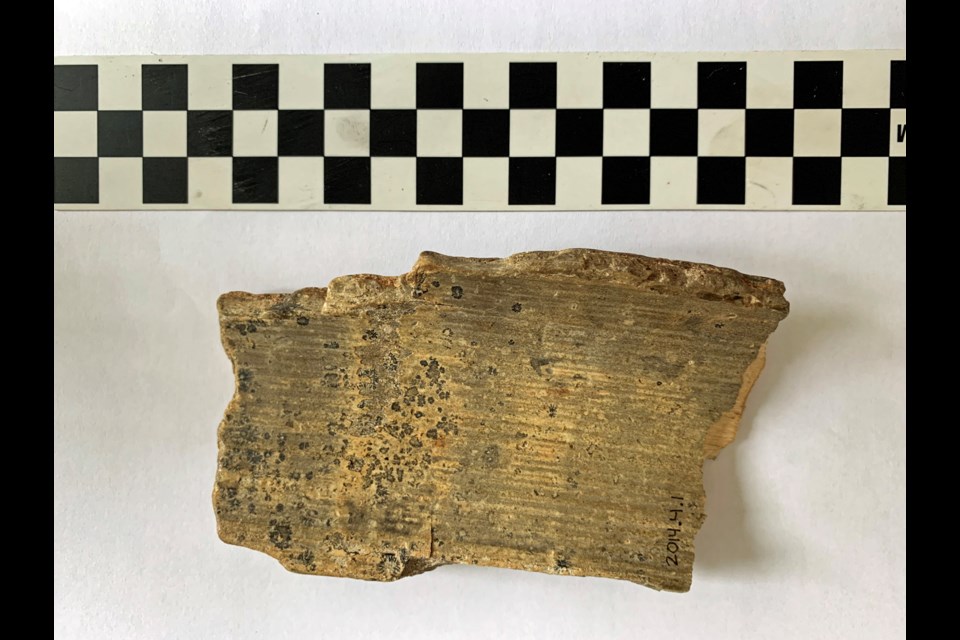Back in July of 2020, The Exploration Place partnered with researchers from Simon Fraser University and contributed to the British Columbia Megafauna Project. The project studies large ice age animals in B.C. by documenting items from both private and public collections with the aim to find and document as many of them as possible. In doing so, they will discover more about when they lived, information on their health and age, and information on their diet and how and where they moved across ice age British Columbia.
Large ice age animals, such as mammoths, mastodons, bison, and elk that roamed North America near the end of the ice age are referred to as megafauna. Why these large animals went extinct has been widely debated, but projects like these are beginning to give us a clearer answer. The answer is complex: changing climate and human hunting have both played a role in the extinction of these megafauna at various times and in different places depending on the animal.
SFU researcher Laura Termes, an archaeology Ph.D. student, visited The Exploration Place and took a small sample from a mammoth tusk in The Exploration Place’s collection.
Mammoths, like ours, lived in B.C. during the Pleistocene epoch and are one of the best species indicators for this work because of the astronomical amount of food and water they required to survive each day. Indicator species are those that serve as a good measure of the environmental conditions in a particular location and can therefore tell us a lot about that environment.
Donated initially in 2014 by George Collins, the tusk was collected during the construction of the Giscome Highway at the Bonnet Pit (Bonnet Hill) on May 18, 1946. When Collins originally collected it, he was hand-shoveling at the site approximately 50 feet below the surface.
He believed he was picking up a piece of fossilized wood and found another two pieces while working. He knew it was something special and wanted to share it with the community, so he donated a piece to the university and The Exploration Place. Staff scientists were not convinced that it was wood and thought it might be something more.
When interdisciplinary earth scientist Michael Wilson visited in 2015, he confirmed that it was not petrified wood but mammoth tusk.
After doing a bit more research, our curatorial team quickly learned that seven years later, in the same gravel pit as the one Mr. Collins was working in, a four-foot tusk was plucked from the conveyor belt on its way to the rock crusher. It weighed approximately twenty-five pounds and was found only ten feet below the surface. Unfortunately, though much more of the mammoth’s remains were reported to be present (including whole large bones with points of articulation), any other remains went through the rock crusher and are now part of the roads and highways in the area. At the time, it was believed that they had discovered the first mammoth in British Columbia. No one knew that Collins had, in fact, found one seven years prior in the same location.
It is not unusual to find sites containing multiple skeletons. This might be because these locations were natural traps in which individuals accumulated over time.
When our team heard about the British Columbia Megafauna Project, we jumped at the opportunity to learn more about our locally found mammoth, perhaps the first one found in B.C.
So far, this is what we know: our mammoth was found in the Bonnet Pit, in the same gravel left behind by a glacier thousands of years ago. Radiocarbon dating tells us that it lived and died approximately 33,000 years ago! Two species of mammoths have been reported in B.C., the Columbian mammoth (Mammuthus columbii) and the famous Wooly mammoth (Mammuthus primigenius). Our tusk likely belonged to a woolly mammoth rather than a Columbian mammoth; however, mammoth size and type are not well known for our area of the province, and it is difficult to prove without the dental metrics.
Two other mammoths, found locally in the Fraser River, were also tested from private collections. Even more intriguing is that these were dated approximately 35,000 years ago and 37,500 years ago. This means that mammoths roamed the area for at least 4,500 years.
We are excited to continue to learn more about our mammoth and are anxiously awaiting the results of the radioisotope analysis. This will allow us to track its movement on the landscape, give us insight on diet and help paint a picture of what the environment in and around Prince George looked like 33,000 years ago.
By continuing to do this sort of scientific research on our collection, we hope to strengthen the academic work being done in this part of the province and help tell a more complete and more comprehensive picture of what Prince George looked like through the vastness of time.
Alyssa Leier is the curator at The Exploration Place.



